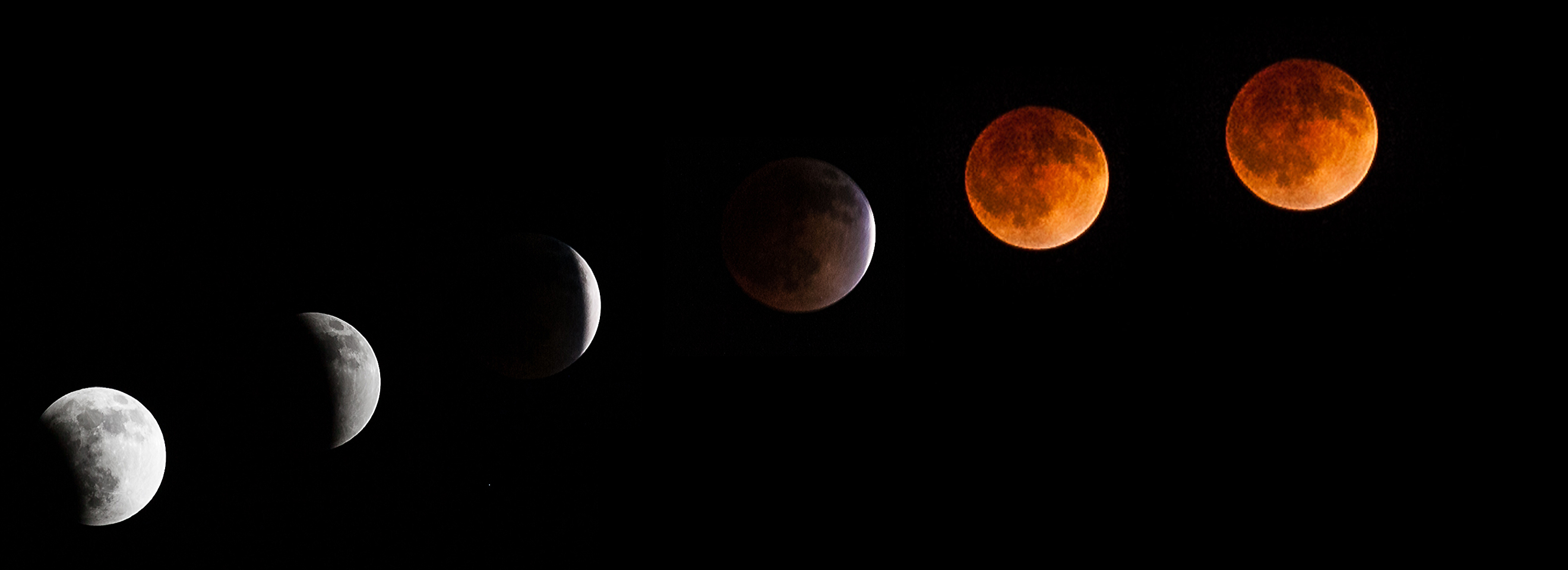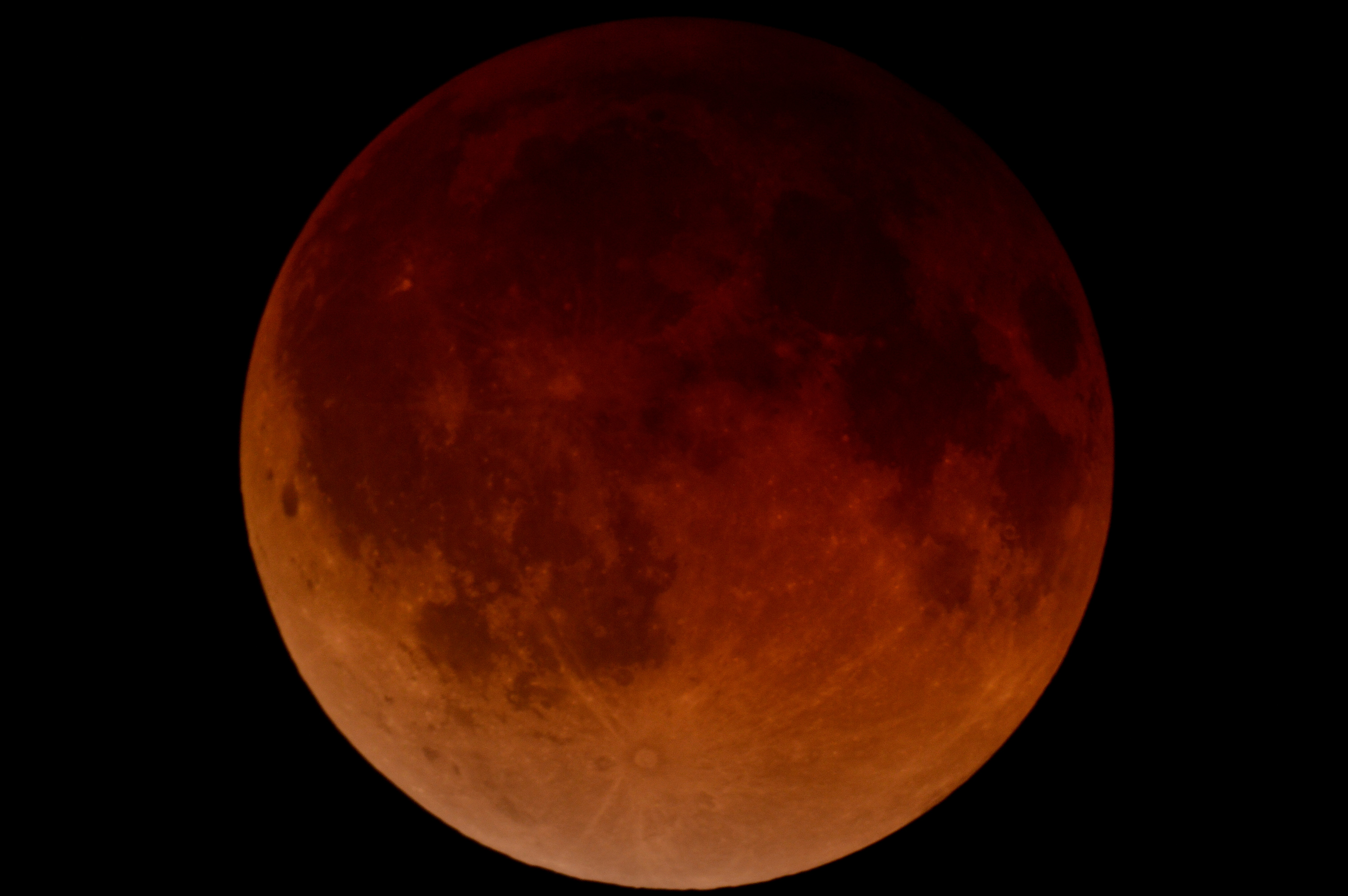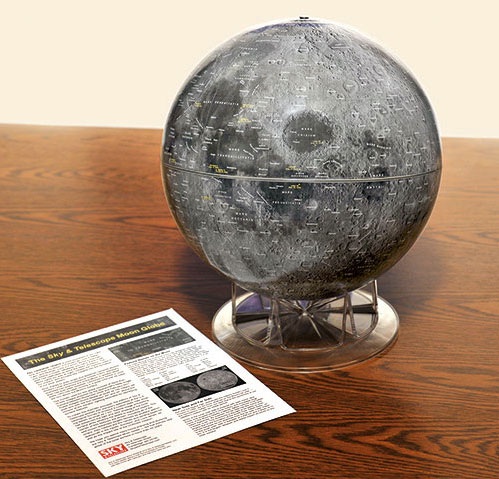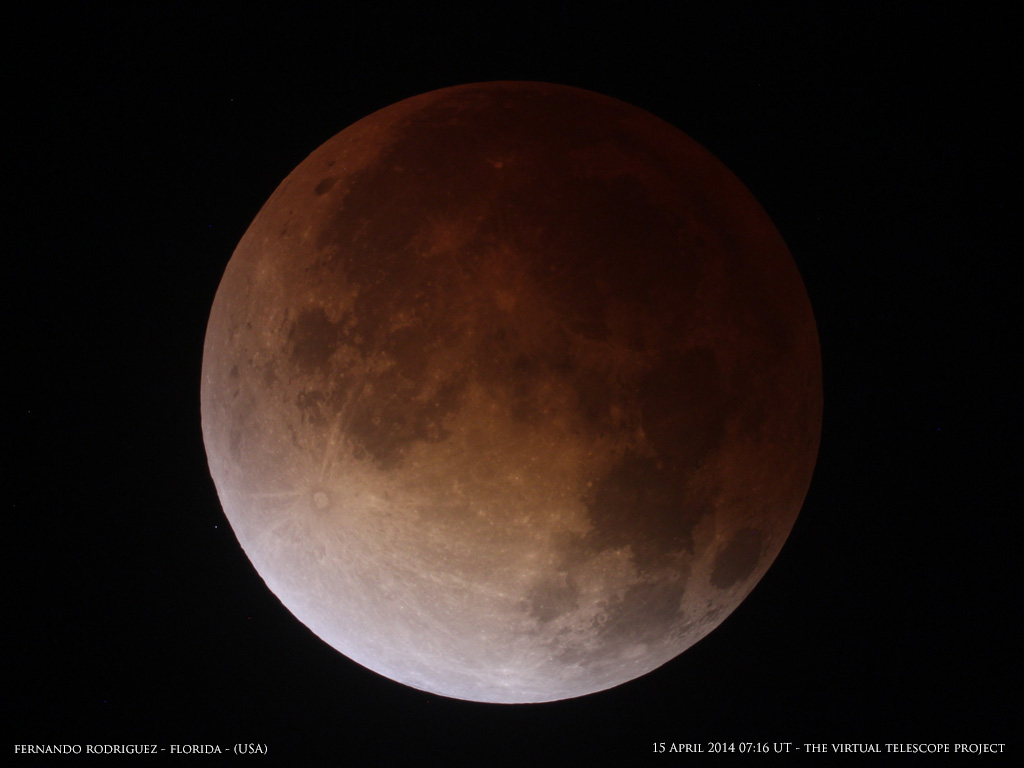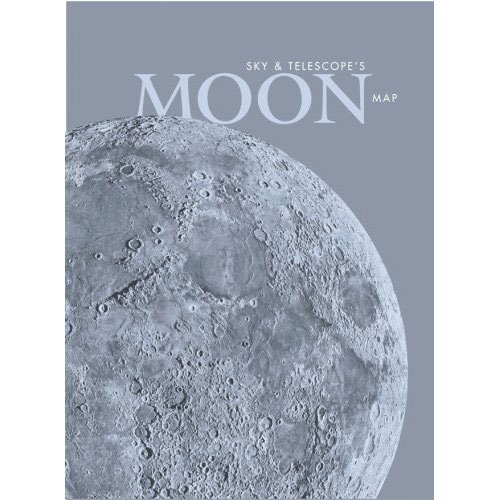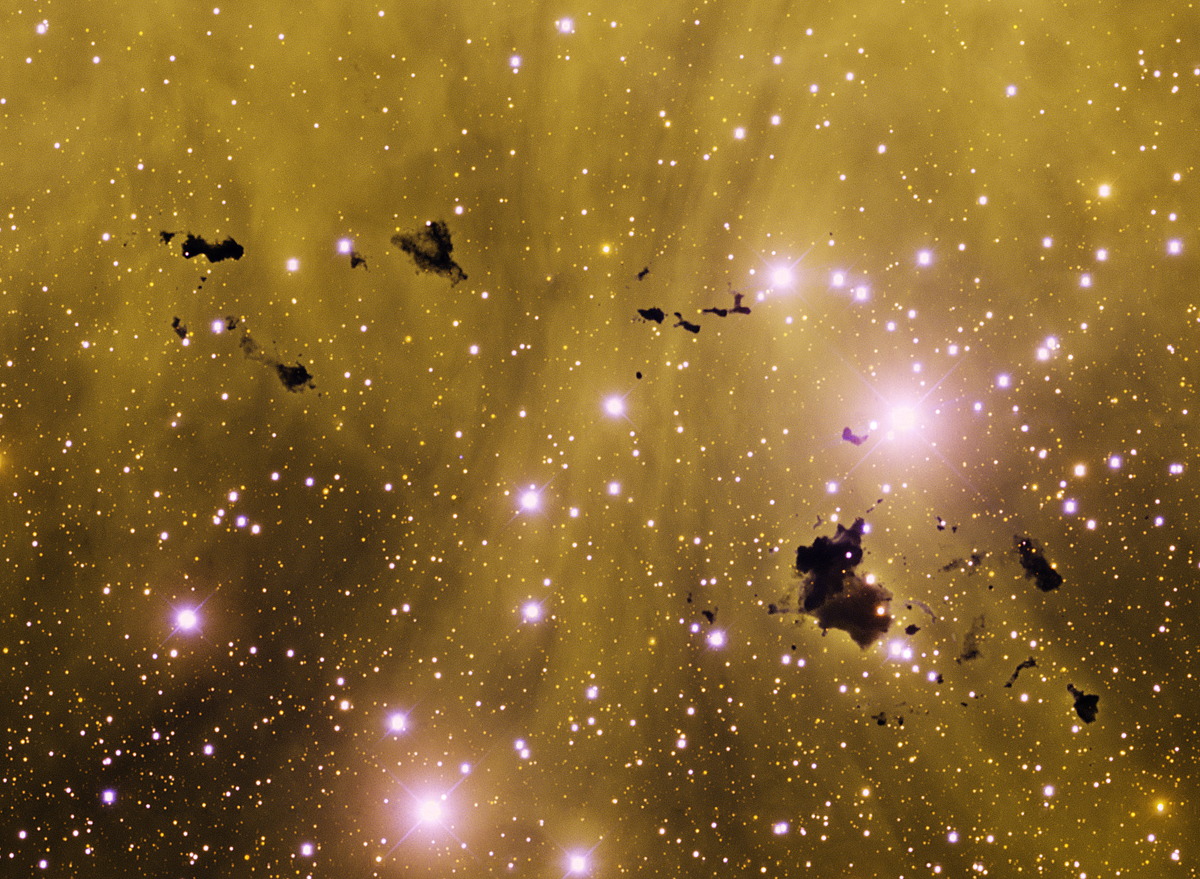Under a Blood Moon: 1st Total Lunar Eclipse of 2014 Wows Stargazers (Photos)

The moon took on an eerie blood-red hue early Tuesday during the first total lunar eclipse of 2014, a celestial sight that wowed potentially millions of stargazers across North and South America.
The total lunar eclipse of April 15 lasted about 3.5 hours between late Monday and early Tuesday, with the Earth's shadow slowing darkening the face of the so-called "Blood Moon" in a jaw-dropping sight for stargazers willing to stay up extra late or rise super-early for the event.
"Definitely worth the early wake-up call," skywatcher Brett Bonine of Arkansas told Space.com in an email. [Blood Moon Photos: Amazing Total Lunar Eclipse Views for April 15]
The lunar eclipse peaked at 3 a.m. EDT (0700 GMT), with the moon taking 78 minutes to pass through the darkest point of Earth's shadow. It was visible from most of North and South America, Hawaii and parts of Alaska. The eclipse was the first of four consecutive total lunar eclipses, known as a "tetrad," between April 2014 and September 2015.
Astronomer Bob Berman, who hosted a live lunar eclipse webcast for the Slooh community telescope using views from Arizona's Prescott Observatory, said event was also one for the record books because of another bright object in the predawn sky.
"It was the most special one, I would say, of our lives," Berman said during the Slooh webcast. "What made it particularly extraordinary was that it happened on the same night as the closest approach of Mars to Earth in years."
Mars made its closest approach to Earth since 2008 on Monday night (April 14), coming within 57.4 million miles (92.4 million km) of our planet.
Breaking space news, the latest updates on rocket launches, skywatching events and more!
So the Red Planet and the "Blood Moon" shined together in the predawn sky in a rare event, Berman said, adding that the bright blue star Spica completed the show.
"We'll never again for the rest of our lives see a total eclipse of the moon on the same night as the closest approach of a bright planet like Mars," Berman said.
Space.com was flooded with lunar eclipse photos taken by excited observers from across the United States, with images coming in from Hawaii, Puerto Rico and even a Disney Fantasy cruise ship in the Gulf of Mexico.
While heavy cloud cover and rain threatened to spoil the total lunar eclipse for observers in the eastern United States, stargazers in the central and western United States got a good lunar show. In addition to the Slooh webcast, several other groups streamed live views of the eclipse.
The University of Arizona's Mt. Lemmon SkyCenter at the Steward Observatory atop Mt. Lemmon in Arizona streamed spectacular telescope views of the eclipse from its start to finish. NASA's Marshall Space Flight Center in Alabama teamed up with the iconic Griffith Observatory in Los Angeles, Calif., to offer another view.
NASA is also keeping close watch on two solar-powered spacecraft currently orbiting the moon. The lack of sunlight on the moon during the eclipse was expected to starve NASA's Lunar Reconnaissance Orbiter and LADEE moon dust probe, both of which are solar powered.
Meanwhile, the Virtual Telescope Project in Ceccano, Italy (where the eclipse was not visible) streamed live views of spectacular eclipse photos by astrophotgraphers across the United States. In South America, the Gloria Project held a live webcast at the Incan ruins of Cusco, Peru to mark the event.
Photographer Tyler Leavitt of Las Vegas, Nevada, captured a stunning series of images showing the moon slowly waltz into Earth's shadow, then take on its iconic blood-red hue. Leavitt took the photos from his front driveway between 11:30 p.m. and 1:20 a.m. PDT, and he was not alone.
"It was nice to see several of the neighbors coming out to take a look also," Leavitt told Space.com in an email.
Lunar eclipses occur when the moon is full and passes through part or all of the Earth's shadow. Total lunar eclipses happen when the moon is totally enveloped by Earth's shadow, darkening the face of the moon. Because the moon's orbit is tilted, it does not perfectly align with Earth and the sun every month so lunar
Later this month, from April 28 to April 29, the sun will turn into a "ring of fire" during an annular eclipse. It's possible, however, that the celestial sight will only be visible for penguins. The solar eclipse's totality will only be visible over an uninhabited part of Antarctica. This year's total lunar eclipses and solar eclipses are among the most promising stargazing events of 2014.
The next total lunar eclipse of 2014 will occur on Oct. 8, followed by another on April 8, 2015 and the last total lunar eclipse of the current tetrad on Sept. 28, 2015.
Editor's Note: If you snapped an amazing picture of the April 15 total lunar eclipse, you can send photos, comments and your name and location to managing editor Tariq Malik at spacephotos@space.com.
Miriam Kramer @mirikramer contributed to this report from New York City. Email Tariq Malik at tmalik@space.com or follow him @tariqjmalik and Google+. Follow us @Spacedotcom, Facebook and Google+. Original article on Space.com.

Tariq is the award-winning Editor-in-Chief of Space.com and joined the team in 2001. He covers human spaceflight, as well as skywatching and entertainment. He became Space.com's Editor-in-Chief in 2019. Before joining Space.com, Tariq was a staff reporter for The Los Angeles Times covering education and city beats in La Habra, Fullerton and Huntington Beach. He's a recipient of the 2022 Harry Kolcum Award for excellence in space reporting and the 2025 Space Pioneer Award from the National Space Society. He is an Eagle Scout and Space Camp alum with journalism degrees from the USC and NYU. You can find Tariq at Space.com and as the co-host to the This Week In Space podcast on the TWiT network. To see his latest project, you can follow Tariq on Twitter @tariqjmalik.
